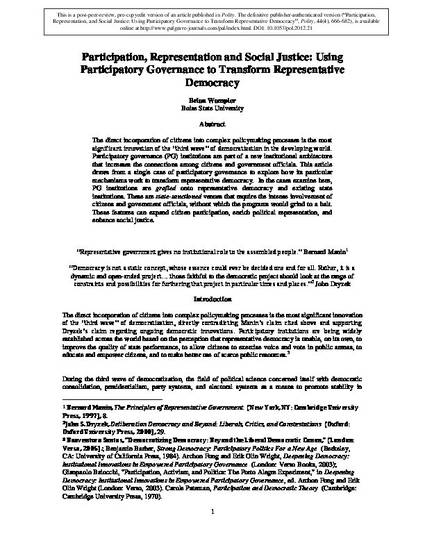
The direct incorporation of citizens into complex policymaking processes is the most significant innovation of the "third wave" of democratization in the developing world. Participatory governance (PG) institutions are part of a new institutional architecture that increases the connections among citizens and government officials. This article draws from a single case of participatory governance to explore how its particular mechanisms work to transform representative democracy. In the cases examine here, PG institutions are grafted onto representative democracy and existing state institutions. These are state-sanctioned venues that require the intense involvement of citizens and government officials, without which the programs would grind to a halt. These features can expand citizen participation, enrich political representation, and enhance social justice.
This is a post-peer-review, pre-copyedit version of an article published in Polity. The definitive publisher-authenticated version (“Participation, Representation, and Social Justice: Using Participatory Governance to Transform Representative Democracy”, Polity, 44(4), 666-682), is available online at http://www.palgrave-journals.com/pal/index.html. DOI: 10.1057/pol.2012.21
Available at: http://works.bepress.com/brian_wampler/15/
